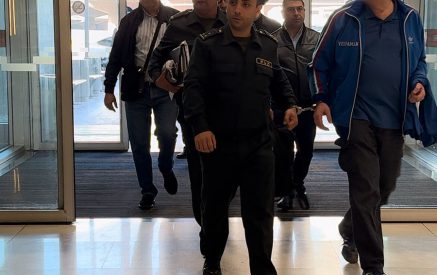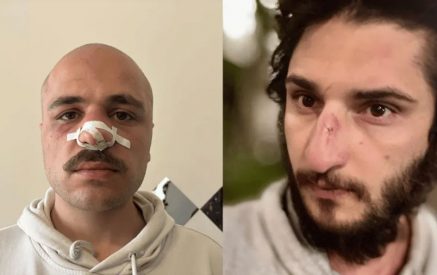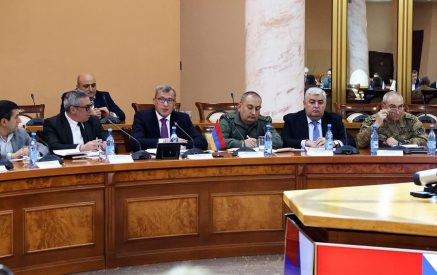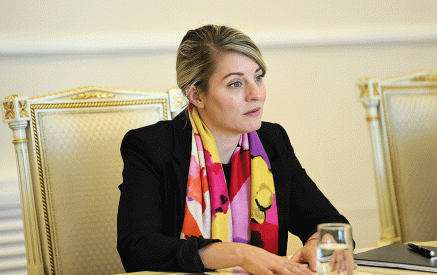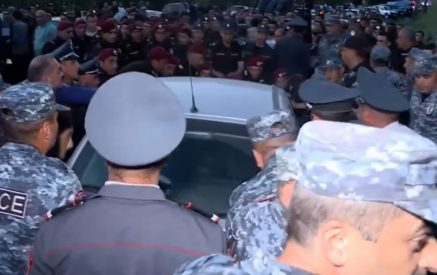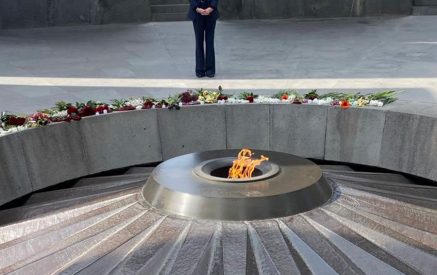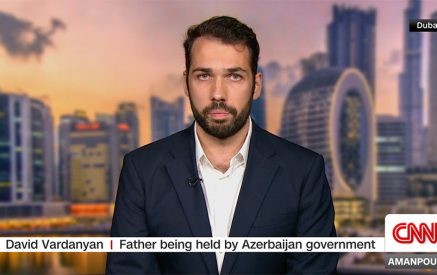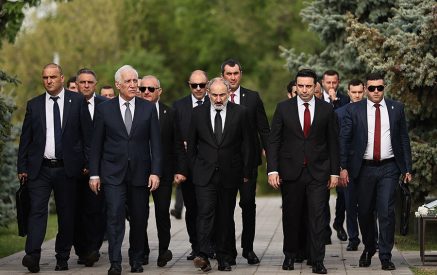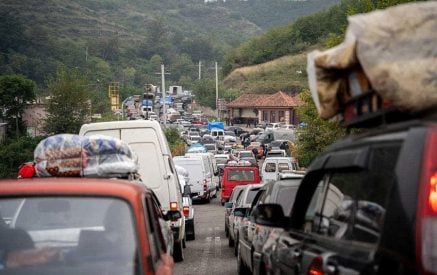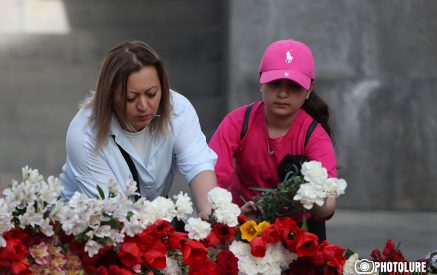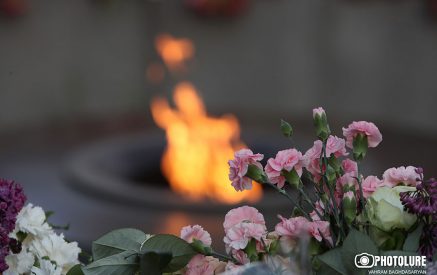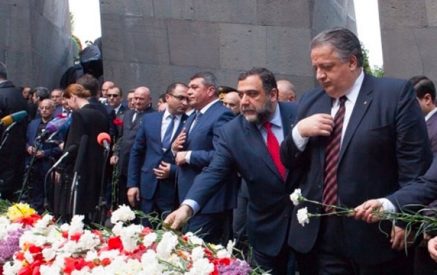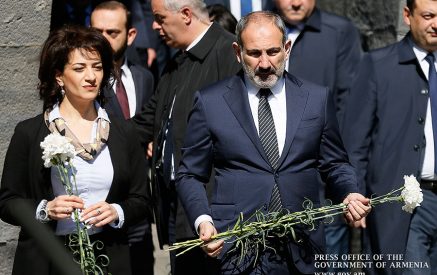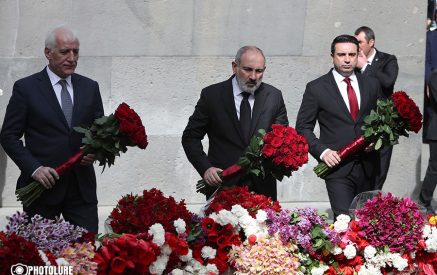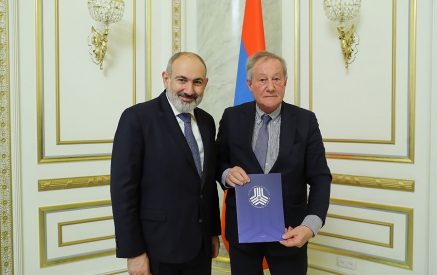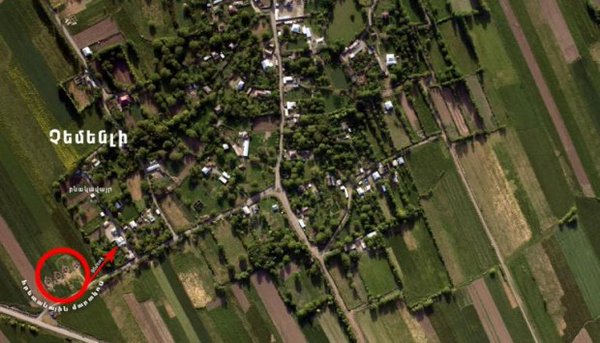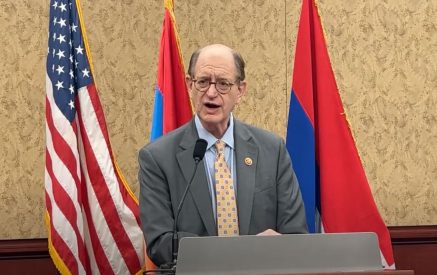1. Since 2 April 2016, the Azerbaijani military forces have committed numerous grave violations of international human rights law and humanitarian law by aggressively attacking the entire Line of Contact between the NKR-Azerbaijani forces, as well as the Nagorno Karabakh settlements near the Line of Contact and deep in the rear.
2. These grave violations are comprehensively analyzed and documented in the Interim Public Report of the NagornoKarabakh Ombudsman on Atrocities Committed by Azerbaijani Military Forces against the Civilian Population of the NKR and the Servicemen of the NKR Defence Army on 2-5 April 2016 published on 21.04.20161 . The report presents cases of gross human rights violations; attacks on civilian settlements of the NKR, as well as of inhuman treatment, torture and mutilation of the NKR Defense Army Servicemen and civilians. This report also provides unbiased assessments of international human rights organizations on Azerbaijan’s policy of inciting hatred and violence against people of Armenian ethnicity, as well as horrific consequences of that policy.
3. However, Azerbaijan continues systematic gross violations of fundamental human rights and principles of international humanitarian law. Namely, it has located its armed forces in the Azerbaijani civilian settlements near the frontline positions from where they shell both military installations and civilian objects in the Nagorno Karabakh Republic. Besides, they have used indiscriminate weapons against the civilians. Human shielding
4. Intentional deployment by Azerbaijan of its military units and artillery in the vicinity and within civilian settlements and using them as firing positions goes against the obligations imposed upon by the Geneva Convention (IV, Article 28) to which Azerbaijani Republic is a State Party and which reflects fundamental rules of international humanitarian law, as well as other obligations under customary international law.
Read also
5. The said actions constitute a violation of the fundamental obligations not to use civilians to shield military objectives, to take precautions against the effects of the attack and in particular the obligation not to locate military objectives within or near densely populated areas. These obligations, being enshrined under Articles 51(7) and 58 of the Protocol I Additional to the Geneva Conventions of 1949, are also reflective of customary international law2 , which in fact has been recognized by international tribunals3 . Thus, failure of Azerbaijan to become a State Party to the aforesaid instrument has no justification for failure to abide by the said requirements under customary international law. It is worth mentioning that the prohibition of using human shields is strictly stipulated by the Criminal Code of Azerbaijan as well.
6. Furthermore, Azerbaijan, in breach of the obligation to take feasible precautions to separate civilian objects and military objectives, has been using these locations for indiscriminate shelling of the Nagorno Karabakh settlements; actions also prohibited by customary international law and the core of international humanitarian law4 .
7. These provocative actions by the Azerbaijani forces leave no option for the Nagorno Karabakh Defense Army but to engage in military operations with the purpose of eliminating the Azerbaijani military objectives, taking all the feasible precautions to protect civilian population and objects and to prevent collateral damage.
8. Notably, the presence of protected persons may not be used to render certain points or areas immune from military operations as established under customary international humanitarian law5 . Thus, Azerbaijan is directly responsible for any damage inflicted upon its civilians and the civilian property alike.
Use of indiscriminate weapons
9. Contrary to the principle of distinction 6 Azerbaijan used heavy flamethrower systems TOS-1A “Solntsepyok”7 , as well as “Smerch” cluster munitions rockets8 , posing an immediate threat to civilians and making the civilian population of the Nagorno KarabakhRepublic as such an object of attacks. Furthermore, public statements denying the existences of peaceful population followed these attacks9 , which in itself revealed Azerbaijan’s disguised intention to destroy the civilian population with the use of banned indiscriminate weapon.
10. Protocol III on Prohibitions or Restrictions on the Use of Incendiary Weapons of the United Nations Convention on Certain Conventional Weapons prohibits, in all circumstances, making the civilian population as such, individual civilians or civilian objects, the object of attack by any weapon or munitions which is primarily designed to set fire to objects or to cause burn injury to persons through the action of flame, heat or a combination thereof, produced by a chemical reaction of a substance delivered on the target. The protocol also prohibits the use of air-delivered incendiary weapons against military targets within a concentration of civilians, and limits the use of incendiary weapons delivered by other means. At the same time the Convention on Cluster Munitions prohibits the use, production, transfer, and stockpiling of cluster munitions.
11. Failure of Azerbaijan to react to the calls of international community10 to take appropriate measures so that ultimate adherence to these instruments is universal, also by ratifying the aforesaid instruments, however does not make the use of these weapons in line with international law, particularly “intransgressible principles of international customary law”. As human rights organizations constantly report the use of cluster munitions in populated areas violates the laws of war due to the indiscriminate nature of the weapon and amounts to war crimes11.
Human Rights Defender (Ombudsman)
of the Nagorno Karabakh Republic
Shushi, May, 2016
1 https://www.ombudsnkr.am/Interim_Public_Report_NKR_Omb_FINAL.pdf.
2 ICRC Study on Customary IHL, Rules 22 and 97, available at https://www.icrc.org/customaryihl/eng/docs/v1_rul_rule22 and https://www.icrc.org/customary-ihl/eng/docs/v1_rul_rule97.
3 Prosecutor v. Kupreskic et al., Case no. IT-95-16-T, Judgment of 14 January 2000, para. 524; Prosecutor v. Blaskic, Case no. IT-95-14-A, Judgment of 29 July 2004, para. 652.
4 Western Front, Aerial Bombardment and Related Claims – Eritrea’s Claims 1, 3, 5, 9-13, 14, 21, 25 & 26, Eritrea-Ethiopia Claims Commission – Partial Award [2005],26 UNRIAA 291, 304, para. 15.
5 For details see, www.icrc.org.
6 In the advisory opinion in the Nuclear Weapons case, the International Court of Justice stated that the principle of distinction was one of the “cardinal principles” of international humanitarian law and one of the “intransgressible principles of international customary law”.
7 https://azeridaily.com/reality/17758
8 https://www.arminfo.info/index.cfm?objectid=5506E310-FB23-11E5-8F470EB7C0D21663
9 https://m.haqqin.az/news/69159
10Council of Europe Parliamentary Assembly, Resolution 1085 (24 April 1996), UN General Assembly, Resolution 51/49 (10 December 1996), etc.
11 https://the-monitor.org/media/2135498/2015_ClusterMunitionMonitor.pdf https://www.hrw.org/news/2014/10/20/ukraine-widespread-use-cluster-munitions

















